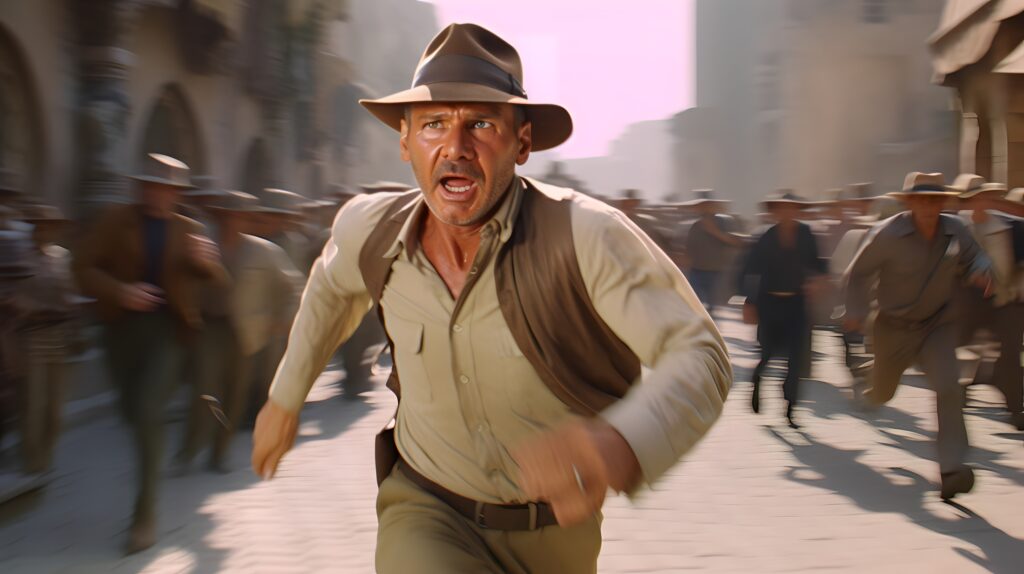Indiana Jones is back for his final quest in “Dial of Destiny”. After more than 40 years as a pop culture icon, does this last adventure live up to the legacy of one of cinema’s most beloved characters? Join us as we delve into this much-anticipated finale, from its nostalgic beginnings to its potentially controversial climax. Can this final installment, with an aging Harrison Ford at the helm, evoke the same freshness and thrill as when Indy first landed on our screens back in 1981? Let’s find out.
“Dial of Destiny” whisks us back to 1944, with Indiana Jones (Harrison Ford) embroiled in the pursuit of the Spear of Longinus – a relic believed by Hitler to have the power to alter the course of the war. Indy is aided by an old friend, Basil Shaw (Toby Jones), who uncovers a plot by the Nazis to acquire the lost Antikythera. The Antikythera, a dial designed by mathematician Archimedes, soon becomes the center of a thrilling chase led by Nazi rocket scientist Jürgen Voller (Mads Mikkelsen).
Director James Mangold makes his mark early in the film with a nail-biting train chase sequence, reminiscent of Indiana Jones’ classic adventures. The film then fast forwards to 1969, where we find a worn-out Indy, underappreciated by his students at a small New York College. His life, further burdened by family tragedy and heavy drinking, takes an unexpected turn with the arrival of Helena Shaw (Phoebe Waller-Bridge), Basil’s grifter daughter.
Helena’s reunion with Indy unveils an astounding discovery – the Antikythera’s potential to detect spacetime fissures. However, their discovery doesn’t go unnoticed. Voller, living under an assumed name and working for the U.S. government, resurfaces, igniting another gripping chase to find the missing piece of the dial before an impending catastrophe.
“Dial of Destiny” continues to pay homage to its predecessors, featuring Nazi villains and drawing parallels to the struggles of the late 1960s. In a surprising twist, Mikkelsen’s character mirrors the real-life Wernher von Braun, a Nazi scientist granted clemency and citizenship in exchange for his work on the U.S. space program.
As the plot unfolds, fans are treated to a mix of familiar and fresh elements, building up to an intense climax that may divide viewers. Some may find the suspension of disbelief pushed to its limits, but for fans of Indy, such moments are part and parcel of the thrilling journey.
The strength of the film lies in Mangold’s skilled direction, particularly visible in the film’s closing scenes. His ability to capture the essence of Indy’s character, combined with a narrative that respects its past while charting new adventures, ensures that “Dial of Destiny” delivers as a worthy finale.
“Dial of Destiny” is a heartfelt tribute to one of cinema’s most iconic heroes – Indiana Jones. It combines elements of nostalgia with new adventures, skillfully closing a chapter that began four decades ago. The legacy of Indiana Jones is one of unrepeatable vintage adventure, a tale once told that can never be recreated. Mangold, in his directorial prowess, ensures that the final scenes of the movie are poignant and moving. This is not just a film, it’s a farewell – an acknowledgment that there can only be one Harrison Ford, and there can only be one Indiana Jones. It may not be as fresh as the first, but it remains true to the series’ legacy – a fitting finale to an unforgettable journey.



